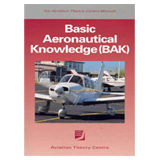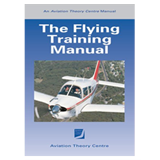[wp_eMember_compact_login]
Maximum Performance Circuits
There will be times during your training or your flying practice where you’ll visit airfields of questionable quality and length. This lesson looks at your aircraft’s abilities based on the conditions of the field and techniques to conduct short takeoffs and landings.
During your brief, you’ll learn the following and more:
- Introduction to Pressure Height and Density Height calculations.
- Introduction to aircraft takeoff & landing distance performance charts.
- Techniques to achieve maximum take-off and landing performance in your aircraft.
Lesson Techniques
There’s an interesting article about the practical approach to short takeoff and landings into unknown fields. Click the black image to the right to have a read.
Print off a hardcopy of the procedures in the Useful Links and Files section belew. You will need to reference your aircraft’s POH to find the procedure and speeds used during the short field takeoff, soft field takeoff and short field landing. (Try the ‘normal procedures’ section of the POH)
Once you’ve found the procedures in the POH, write the speeds onto your printed hard copies for later reference.
Resources
Readings
Before attending your Briefing and Lesson, you should have read the following:
- The Flying Training Manual – Chapter 17 Adv. takeoff and landings
- Basic Aeronautical Knowledge (BAK) – Chapter 11, Performance


Useful Links & Files
Generic Short Field Takeoff Technique
Download 133.73 KBGeneric Soft Field Landing Technique
Download 3.62 MBGeneric Short Field Landing Technique
Download 119.05 KBRunning Out of Runway
Download 733.65 KBInstructor’s Tips
- Once you understand how to calculate takeoff and landing distance, you should practice regularly, as it will feature in your upcoming exams and check flights
- The key to a successful short field landing is speed control on final. Every knot faster than the POH given speed will equate to more float in the hold off before touchdown (not what we want during a short landing)
- Your Instructor isn’t hoping you’ll break the world record for short landings, they just want to see good technique and safe actions.
Questions
This section gives you an opportunity to search for information, which is a skill that will come in handy during your training. Use resources such as your text books or the Internet to answer the following questions.
- What is the short field landing speed for your aircraft?
- Why is it recommended to raise the Flap immediately after touchdown during a short field landing?
- Where should your aimpoint be during a short field landing?
- What is the stall speed for your aircraft (0 and 30 degree flap)
- What is the after takeoff climb out speed during a short field takeoff?
- If the QNH is 1022 and the aerodrome elevation is 400ft, what is the Pressure Height?
- Using the answer to the previous question, what is Density Height if the temperature is 22 degrees?
Learning Objectives
By the end of this Briefing and Flight, you will be expected to be able to:
- state the correct techniques for short field takeoff, soft field takeoff and short field landing in your aircraft
- calculate pressure height and density height
- calculate takeoff and landing distance required if given aerodrome conditions
- conduct STOL operations
